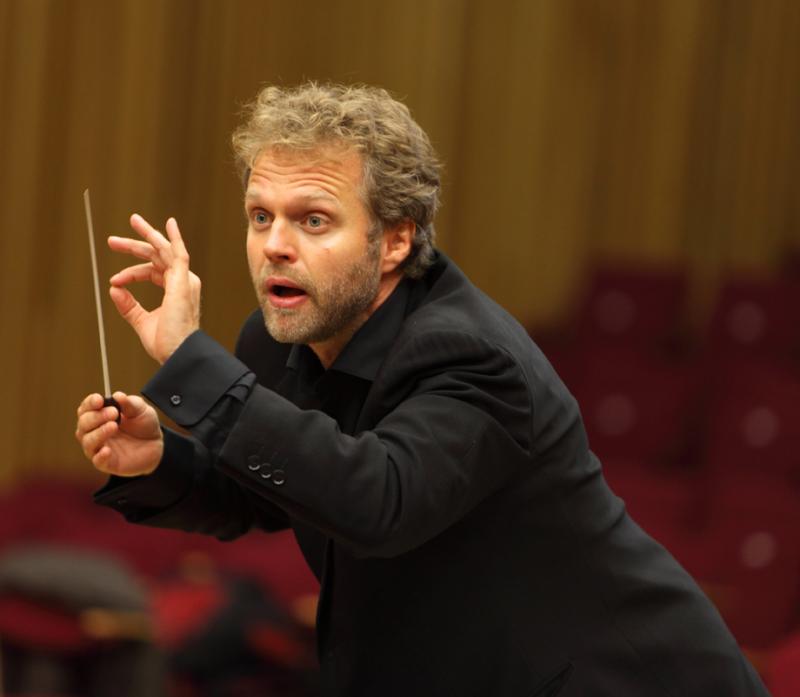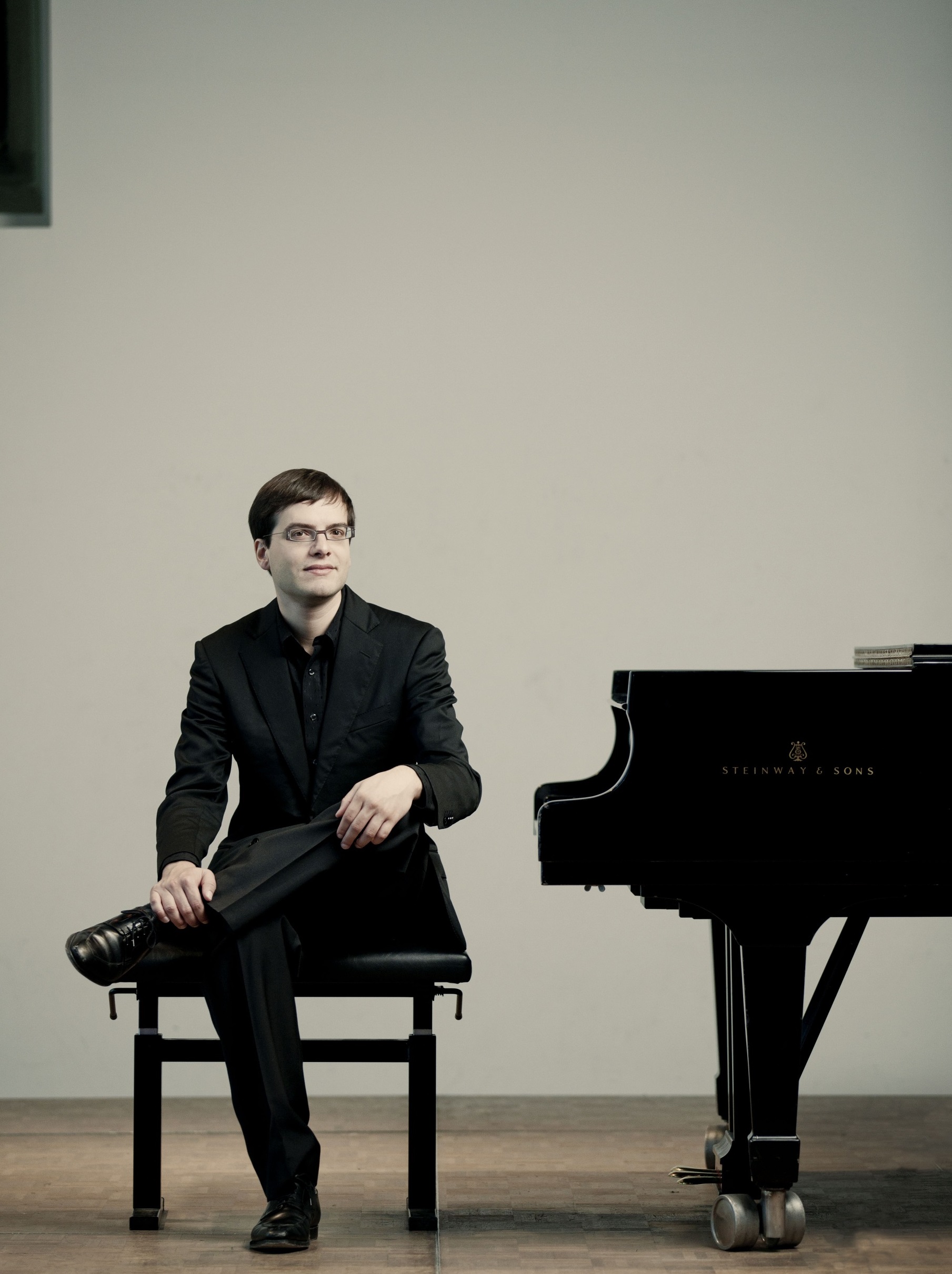Prom 34: Piemontesi, BBCNOW, Søndergård | reviews, news & interviews
Prom 34: Piemontesi, BBCNOW, Søndergård
Prom 34: Piemontesi, BBCNOW, Søndergård
Feathery jewels from the pianist, but mixed fortunes for Nielsen’s battle-scarred symphony

Some things that spread like wildfire, like ebola and wildfire itself, are not good news at all. But performing Nielsen’s symphonies? That’s another matter entirely. In the next concert season, the BBC Symphony Orchestra and the Philharmonia both begin Nielsen symphony programmes, while the LSO several years ago cycled through one of their own with Sir Colin Davis. Yesterday, the BBC National Symphony of Wales and their current Danish conductor – will it ever be someone Welsh?
But would Thomas Søndergård’s account last night have made mass converts to his countryman’s cause? It’s unclear. Tension built slowly but smartly through the first movement’s long undulating lines, pockmarked by the side-drum’s rattle and roll – Nielsen’s clear response to the recent nightmare of the First World War. Full marks too for the added jolt in the movement’s fiery climax, where a second side-drum suddenly fired at us from the Albert Hall gallery. You might as well exploit the building if you have it.
We find Strauss wearing Liszt’s overcoat and Chopin’s trousers
Yet in other respects the building and its acoustic didn’t seem the performance’s best friend, at least from my spot half-way round the stalls. The brass proved continually bumptious, poking out far above the strings and reeling like drunken teenagers on a Saturday night. Actually, for all the symphony’s rumpus, it was in the quieter stretches that the BBCNOW really hit home: in the first movement’s shell-shocked fade-out with the clarinet’s melancholic arabesques, or the little andante section squeezed into the finale, warmed by the expressive throb of the orchestra’s cellos. All told, though, the top of my head wasn’t quite taken off by this performance. Perhaps the upcoming Nielsen cycles will oblige.
 Death sounds also appeared in Søndergård’s opener, Strauss’s early tone poem Death and Transfiguration, though its halting heartbeats and emotional thrashings soon gave way to the transformation theme’s rising curve, succulently traced here. Eminently Straussian in structure, harmonic language and musical motifs, the piece cut a sharp contrast with its concert companion, Strauss's juvenile but fun piano-and-orchestra Burleske, completed just three years before. There we find Strauss wearing Liszt’s overcoat and Chopin’s trousers, wearing them too with a youthful élan well conveyed by the gifted soloist Francesco Piemontesi (pictured, above right, by Marco Borggreve), a recent BBC New Generation Artist.
Death sounds also appeared in Søndergård’s opener, Strauss’s early tone poem Death and Transfiguration, though its halting heartbeats and emotional thrashings soon gave way to the transformation theme’s rising curve, succulently traced here. Eminently Straussian in structure, harmonic language and musical motifs, the piece cut a sharp contrast with its concert companion, Strauss's juvenile but fun piano-and-orchestra Burleske, completed just three years before. There we find Strauss wearing Liszt’s overcoat and Chopin’s trousers, wearing them too with a youthful élan well conveyed by the gifted soloist Francesco Piemontesi (pictured, above right, by Marco Borggreve), a recent BBC New Generation Artist.
Hands firmly positioned over the keys, the touch of this Swiss-Italian pianist remained deliciously light through all the work’s technical difficulties. Brilliant cascades shot out to dazzle us. He even generated appreciative chuckles as he jumped down to the lowest register in a chain of abrupt, knotty chords as the work’s whimsical end approached. The jewellery became more polished still after the interval in Mozart’s A minor Rondo, K.386, despatched with just the elegant ease and clarity this composer needs. Piemontesi’s exquisitely poised encore, a limpid sliver of a Mozart sonata, proved the ideal icing on the cake – and just the squirt of civilisation needed before Nielsen’s menacing side-drum arrived.
rating
Share this article
The future of Arts Journalism
You can stop theartsdesk.com closing!
We urgently need financing to survive. Our fundraising drive has thus far raised £49,000 but we need to reach £100,000 or we will be forced to close. Please contribute here: https://gofund.me/c3f6033d
And if you can forward this information to anyone who might assist, we’d be grateful.

Subscribe to theartsdesk.com
Thank you for continuing to read our work on theartsdesk.com. For unlimited access to every article in its entirety, including our archive of more than 15,000 pieces, we're asking for £5 per month or £40 per year. We feel it's a very good deal, and hope you do too.
To take a subscription now simply click here.
And if you're looking for that extra gift for a friend or family member, why not treat them to a theartsdesk.com gift subscription?
more Classical music
 Bizet in 150th anniversary year: rich and rare French offerings from Palazzetto Bru Zane
Specialists in French romantic music unveil a treasure trove both live and on disc
Bizet in 150th anniversary year: rich and rare French offerings from Palazzetto Bru Zane
Specialists in French romantic music unveil a treasure trove both live and on disc
 Scottish Chamber Orchestra, Ibragimova, Queen’s Hall, Edinburgh review - rarities, novelties and drumrolls
A pity the SCO didn't pick a better showcase for a shining guest artist
Scottish Chamber Orchestra, Ibragimova, Queen’s Hall, Edinburgh review - rarities, novelties and drumrolls
A pity the SCO didn't pick a better showcase for a shining guest artist
 Kilsby, Parkes, Sinfonia of London, Wilson, Barbican review - string things zing and sing in expert hands
British masterpieces for strings plus other-worldly tenor and horn - and a muscular rarity
Kilsby, Parkes, Sinfonia of London, Wilson, Barbican review - string things zing and sing in expert hands
British masterpieces for strings plus other-worldly tenor and horn - and a muscular rarity
 From Historical to Hip-Hop, Classically Black Music Festival, Kings Place review - a cluster of impressive stars for the future
From quasi-Mozartian elegance to the gritty humour of a kitchen inspection
From Historical to Hip-Hop, Classically Black Music Festival, Kings Place review - a cluster of impressive stars for the future
From quasi-Mozartian elegance to the gritty humour of a kitchen inspection
 Shibe, LSO, Adès, Barbican review - gaudy and glorious new music alongside serene Sibelius
Adès’s passion makes persuasive case for the music he loves, both new and old
Shibe, LSO, Adès, Barbican review - gaudy and glorious new music alongside serene Sibelius
Adès’s passion makes persuasive case for the music he loves, both new and old
 Anja Mittermüller, Richard Fu, Wigmore Hall review - a glorious hall debut
The Austrian mezzo shines - at the age of 22
Anja Mittermüller, Richard Fu, Wigmore Hall review - a glorious hall debut
The Austrian mezzo shines - at the age of 22
 First Person: clarinettist Oliver Pashley on the new horizons of The Hermes Experiment's latest album
Compositions by members of this unusual quartet feature for the first time
First Person: clarinettist Oliver Pashley on the new horizons of The Hermes Experiment's latest album
Compositions by members of this unusual quartet feature for the first time
 Gesualdo Passione, Les Arts Florissants, Amala Dior Company, Barbican review - inspired collaboration excavates the music's humanity
At times it was like watching an anarchic religious procession
Gesualdo Passione, Les Arts Florissants, Amala Dior Company, Barbican review - inspired collaboration excavates the music's humanity
At times it was like watching an anarchic religious procession
 Classical CDs: Camels, concrete and cabaret
An influential American composer's 90th birthday box, plus British piano concertos and a father-and-son duo
Classical CDs: Camels, concrete and cabaret
An influential American composer's 90th birthday box, plus British piano concertos and a father-and-son duo
 Cockerham, Manchester Camerata, Sheen, Martin Harris Centre, Manchester review - re-enacting the dawn of modernism
Two UK premieres added to three miniatures from a seminal event of January 1914
Cockerham, Manchester Camerata, Sheen, Martin Harris Centre, Manchester review - re-enacting the dawn of modernism
Two UK premieres added to three miniatures from a seminal event of January 1914
 Kempf, Brno Philharmonic, Davies, Bridgewater Hall, Manchester review - European tradition meets American jazz
Bouncing Czechs enjoy their Gershwin and Brubeck alongside Janáček and Dvořák
Kempf, Brno Philharmonic, Davies, Bridgewater Hall, Manchester review - European tradition meets American jazz
Bouncing Czechs enjoy their Gershwin and Brubeck alongside Janáček and Dvořák
 Solomon, OAE, Butt, QEH review - daft Biblical whitewashing with great choruses
Even a top soprano and mezzo can’t make this Handel paean wholly convincing
Solomon, OAE, Butt, QEH review - daft Biblical whitewashing with great choruses
Even a top soprano and mezzo can’t make this Handel paean wholly convincing

Add comment